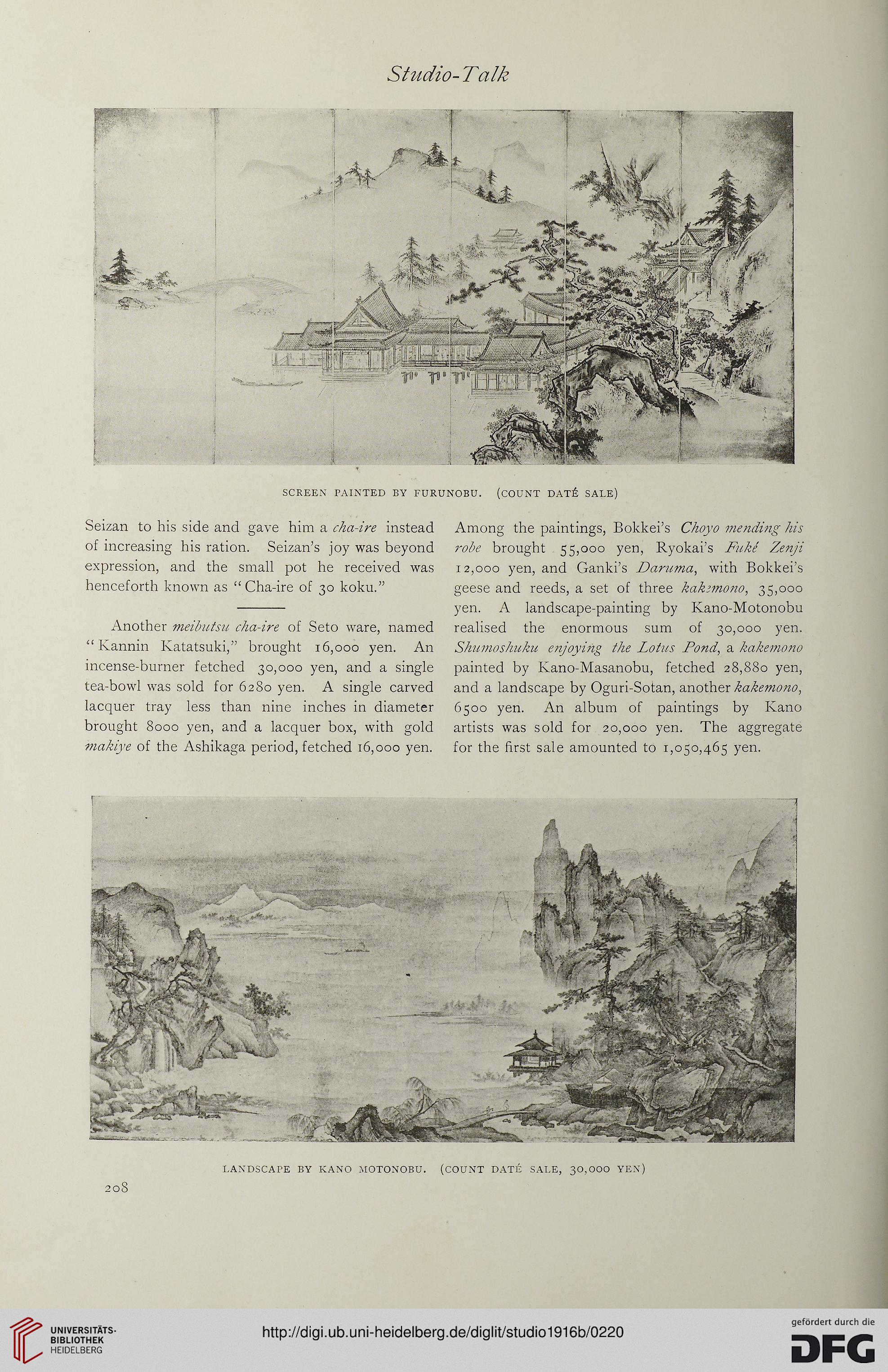Studio-Talk
4
SCREEN PAINTED BY FURUNOBU. (COUNT DATE SALE)
Seizan to his side and gave him a cha-ire instead Among the paintings, Bokkei's Choyo mending his
of increasing his ration. Seizan's joy was beyond robe brought 55,000 yen, Ryokai's FuM Zenji
expression, and the small pot he received was 12,000 yen, and Ganki's Daruma, with Bokkei's
henceforth known as "Cha-ire of 30 koku." geese and reeds, a set of three kakzmono, 35,000
- yen. A landscape-painting by Kano-Motonobu
Another meibutsu cha-ire of Seto ware, named realised the enormous sum of 30,000 yen.
" Kannin Katatsuki," brought 16,000 yen. An Shumoshuku enjoying the Lotus Pond, a. kakemono
incense-burner fetched 30,000 yen, and a single painted by Kano-Masanobu, fetched 28,880 yen,
tea-bowl was sold for 6280 yen. A single carved and a landscape by Oguri-Sotan, another kakemono,
lacquer tray less than nine inches in diameter 6500 yen. An album of paintings by Kano
brought 8000 yen, and a lacquer box, with gold artists was sold for 20,000 yen. The aggregate
makiye of the Ashikaga period, fetched 16,000 yen. for the first sale amounted to 1,050,465 yen.
4
SCREEN PAINTED BY FURUNOBU. (COUNT DATE SALE)
Seizan to his side and gave him a cha-ire instead Among the paintings, Bokkei's Choyo mending his
of increasing his ration. Seizan's joy was beyond robe brought 55,000 yen, Ryokai's FuM Zenji
expression, and the small pot he received was 12,000 yen, and Ganki's Daruma, with Bokkei's
henceforth known as "Cha-ire of 30 koku." geese and reeds, a set of three kakzmono, 35,000
- yen. A landscape-painting by Kano-Motonobu
Another meibutsu cha-ire of Seto ware, named realised the enormous sum of 30,000 yen.
" Kannin Katatsuki," brought 16,000 yen. An Shumoshuku enjoying the Lotus Pond, a. kakemono
incense-burner fetched 30,000 yen, and a single painted by Kano-Masanobu, fetched 28,880 yen,
tea-bowl was sold for 6280 yen. A single carved and a landscape by Oguri-Sotan, another kakemono,
lacquer tray less than nine inches in diameter 6500 yen. An album of paintings by Kano
brought 8000 yen, and a lacquer box, with gold artists was sold for 20,000 yen. The aggregate
makiye of the Ashikaga period, fetched 16,000 yen. for the first sale amounted to 1,050,465 yen.




